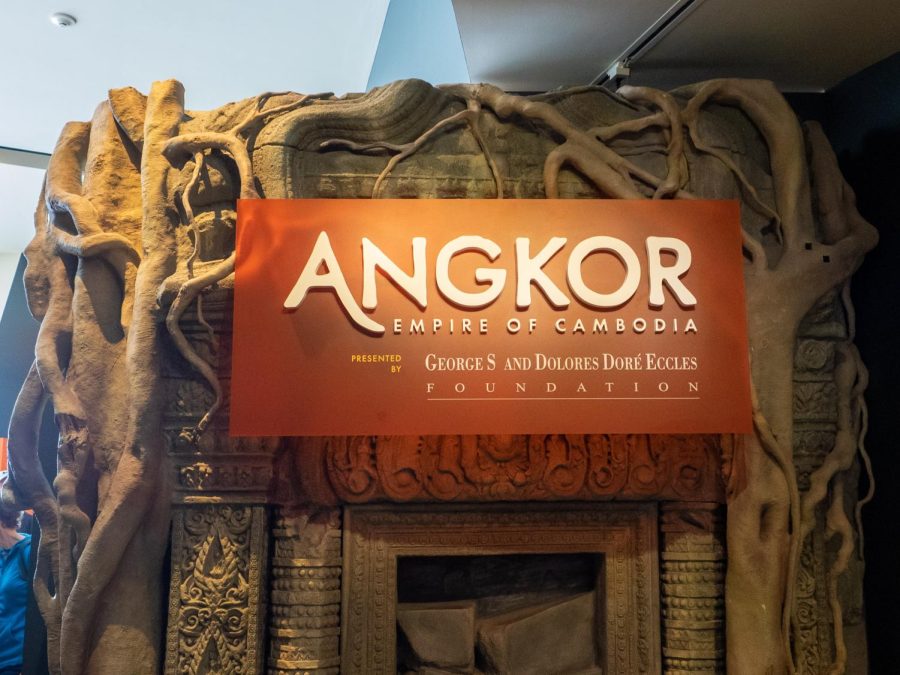NHMU Brings Angkor Ethically to Salt Lake City
The Angkor: Empire of Cambodia exhibit on display at the Natural History Museum of Utah in Salt Lake City on Friday, April 7, 2023. (Photo by Jack Gambassi | The Daily Utah Chronicle)
April 7, 2023
The Natural History Museum of Utah‘s “Angkor: Empire of Cambodia” is a magnificent exhibit with dozens of authentic artifacts and interactive stations that will capture the interest of people of all ages. Visitors can examine exceptionally intricate statues, pillars, pieces of jewelry and pottery or they can rebuild models of Angkor Wat or use the sliding information screen to understand the stories depicted in the densely arranged high-relief walls of the temple.
Rain noises mimic the sounds of the rainforests as guests walk through statues arranged to simulate entering the inner sanctums of the ancient temple. Buddhist and Hindu influences converge in animated artwork of monkeys, snakes, humans and gods. The exhibit is as mesmerizing as it is informative.
Don’t Ask Where We Got All This Stuff
Though museums can be an incredible way to teach youth and adults alike about history, archeology, science and culture, museums in the Western world have come to symbolize some of the most flagrant disrespect of Indigenous cultures by colonialist powers. The British Museum has become a meme because of just how much of its contents were stolen from other cultures. In the U.S., the artwork and even human remains of Native American tribes are displayed in museums, portrayed as something ancient that white men discovered, as if the tribes the objects belong to aren’t actively demanding their heritage be returned to them.
Museums need to reimagine the ways they obtain and exhibit objects of cultural value, ensuring artifacts are obtained ethically and displayed in a way that neither obscures nor fetishizes living cultures.
Ethical Exhibitions
This is why exhibits like “Angkor” are so important. Not only did NHMU partner with the National Museum of Cambodia to borrow the artifacts on display, but the information provided with each piece allows Cambodian archaeologists, rather than the French or any other colonial power, to share their heritage with us on their own terms.
Distributed throughout the exhibit are plaques explaining the stealing and looting that scattered Angkor’s history across the globe. Looting from non-European cultures was hardly looked down upon at the time. One plaque tells how André Malraux, a French looter who was arrested for stealing from a Cambodian temple, later became the minister of cultural affairs for France.
“Angkor” goes beyond simply respecting the culture it represents, it insists viewers understand how important ethical exhibitions are. Many stolen objects are mistreated, forcing art historians to reconstruct artifacts once they are returned. One of the interactives for “Angkor” asks guests to “return the stolen statues” by placing figurines of wrestlers back in their proper position, transforming visitors’ experience from simply passively viewing another culture to actively working towards cultural autonomy.
Visit Angkor
I highly recommend making the trek up to NHMU to see “Angkor: Empire of Cambodia” before it leaves on April 23. If you miss it, be sure to look through NMHU’s Instagram for some enlightening information on the history of Angkor, the creation of this exhibit and the black market of antiquities.







